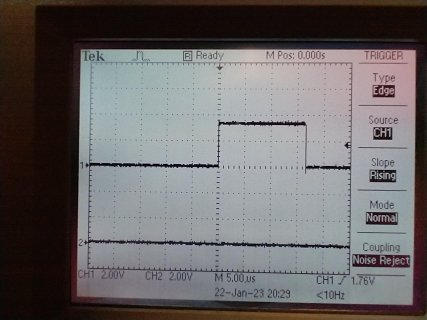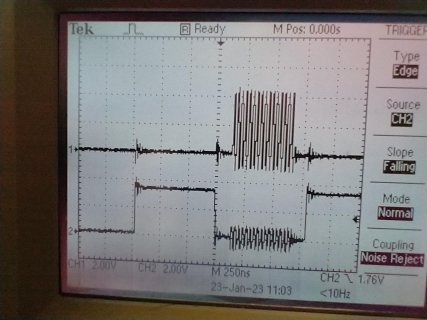@kd5rxt-mark Its just a test program. I wait to initialize the spi until I am actually testing the spi. That is one of the way you check things, your turn them on one at a time. It ranks right up there next to the holy print statement, or the trusty pin toggle in the "on-the-metal" world.
Yes, but once again, when you don't use the library correctly, and then you hope & pray that something gets fixed, when in reality, what needs fixed is completely within your own control . . . Surely the library must be where the fault lies ?!? Reread that & let it fully sink in . . .
I think it is safe to generalize by saying that many Teensy users are using the SPI bus successfully (myself included over many projects & many different kinds of peripherals, and also yourself included, or so it appears in p#9, albeit with some continued torture & abuse of the library), but with that success, it is also safe to say that things always work best when correct calls are made in the correct order, and at the correct time. For example, have you looked at the SPI examples that Teensyduino installs & makes available in the Arduino IDE (working examples can be a real gold mine !!) ?? If you go look, you'll see proper use (when, where, & how) of the functions that @defragster pointed you towards in several of his earlier posts. When you continued to ignore his reference, he eventually went so far as to cut & paste them in for your reference.
Your snide replies to myself and others who are attempting to provide knowledgeable guidance really spoils the scene. Speaking primarily for myself, I would say that no one with sufficient experience needs anyone, particularly you, to sarcastically & condescendingly explain one of the way(s) on how checkout & troubleshooting is done . . . you should understand that those attempting to help by replying with suggestions and/or things to check/modify probably & usually have sufficient positive experience to back up their suggested guidance. From the perspective of one offering suggestions, you don't seem to appreciate the help being offered, particularly when you continue to ignore the suggested guidance, even when pointed out multiple times, sometimes by multiple users.
I'll assert that test programs serve one purpose: to smooth out any bumps along the way toward final sketches, and to provide insight into solving any problems encountered along the way. They may also serve as a learning tool, but that is not the use being discussed here. As you fill out the capabilities of your sketch, implementing anything that is contrary to the designed & intended use of a library is a fool's errand, regardless of whether it is for test purposes or otherwise. You own the freedom to choose how to spend and/or waste your time, but if your ultimate sketch requires that you enable the SPI bus, then I would think that you would want to enable the SPI bus as suggested. . . the earlier that you find out that you have a problem (if there even is a problem), the better, no ??
My final recommendation is to start with a known working example. Study it to make sure that you understand, as completely as possible, what it is doing, why it is doing what it is doing, and how it is accomplishing its intended purpose. Then, and only then, start modifying the working example a little bit at a time, ultimately leading towards a sketch which serves your specific purpose with your specific peripheral. Keep intermediate copies of your sketch as you make positive progress. Now, this recommended approach is not a "holy" approach, but it certainly is a "trusty" one that will almost always benefit you along the way.
Good luck in your endeavors !!
Mark J Culross
KD5RXT




